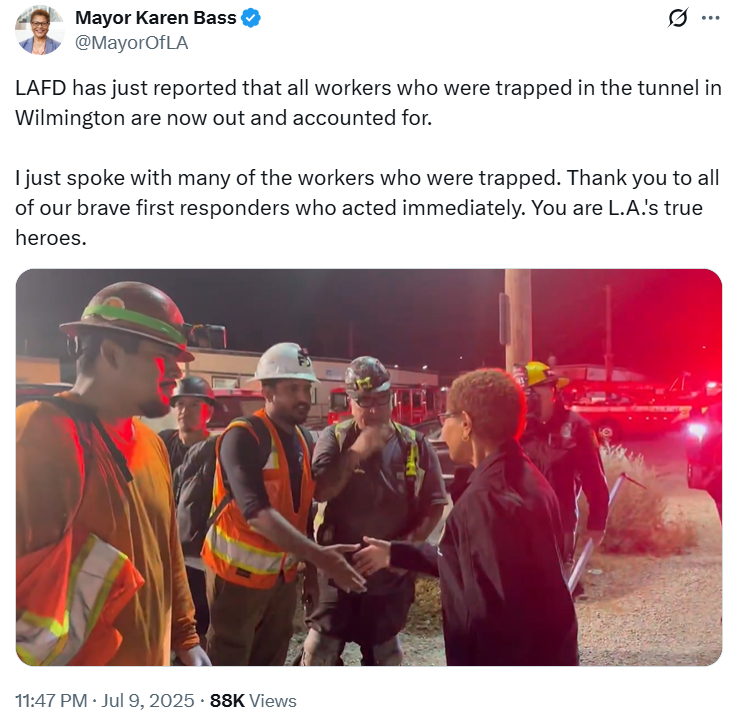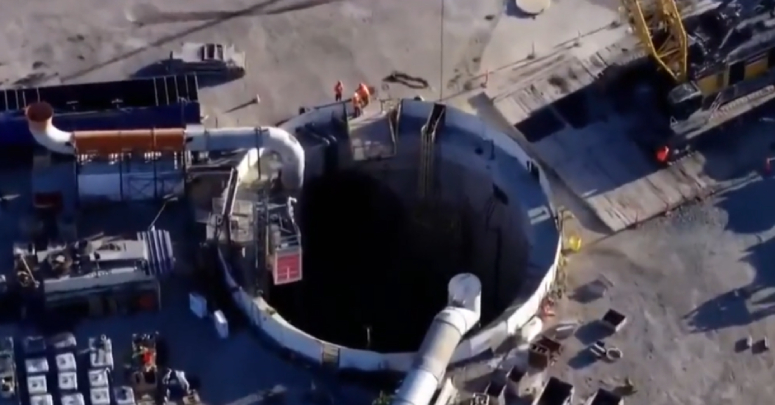What started as an ordinary night shift deep beneath Los Angeles turned into a terrifying ordeal. Thirty-one construction workers were trapped underground when a portion of the city’s massive wastewater tunnel suddenly gave way.
A Calm Night Turns Into Chaos
According to The Guardian, the collapse happened late Wednesday evening while crews were working roughly 400 feet beneath Wilmington, part of a multi-billion dollar tunnel project aimed at modernizing the city’s wastewater system. In an instant, a massive portion of the tunnel caved in, leaving the workers sealed off behind debris.
Many were near the tunnel boring machine, which was carving out the seven-mile Clearwater Tunnel beneath Los Angeles. The collapse left them trapped by 12 to 15 feet of loose soil with no clear way out.
A Race to Escape in the Dark
Despite the terrifying conditions, the workers remained composed. Four additional team members reportedly joined them from outside to assist with navigating back to the boring machine. From there, the group was slowly lifted out one by one using a narrow metal cage.
As reported by The Guardian, all 31 were safely rescued with no serious injuries—a fact that city officials called nothing short of miraculous.
Families Waited, Prayed—and Cried in Relief
Above ground, dozens of family members gathered, fearing the worst. Arally Orozco, whose three brothers were inside, told reporters, “One of them said he thought he was going to die down there.” Relief flooded the crowd when the final worker emerged safely.
Los Angeles City Councilmember Tim McOsker praised the workers’ discipline and technical skills under pressure. “It could have been a tragedy. Instead, it was a testament to how trained and courageous these crews are.” Mayor Karen Bass called the rescue a “victory.”

What Caused the Collapse?
The tunnel, which stretches under parks and public land, is part of the $630 million Clearwater Project led by contractor Flatiron Dragados. According to The Guardian, the project had been proceeding without major issues until now.
The exact cause of the collapse remains under investigation, and all construction has been paused. County officials say they’ll need to assess ground stability, safety systems, and whether the boring machine itself was affected.
What Happens Next?
Originally expected to reach the coast by late 2025, the Clearwater Tunnel is designed to carry treated water to the Pacific Ocean. With the collapse, timelines may be pushed back as safety checks and repairs are completed.
Still, for now, the focus remains on the human outcome. Thirty-one people were pulled from a collapsed tunnel, alive and mostly unharmed. That’s a rare ending for stories that begin this way.
For the families and workers involved, this was more than a successful rescue—it was a second chance. And for a city that often forgets the lives behind its infrastructure, it’s a reminder of the risks taken by the people who keep things moving below the surface.

